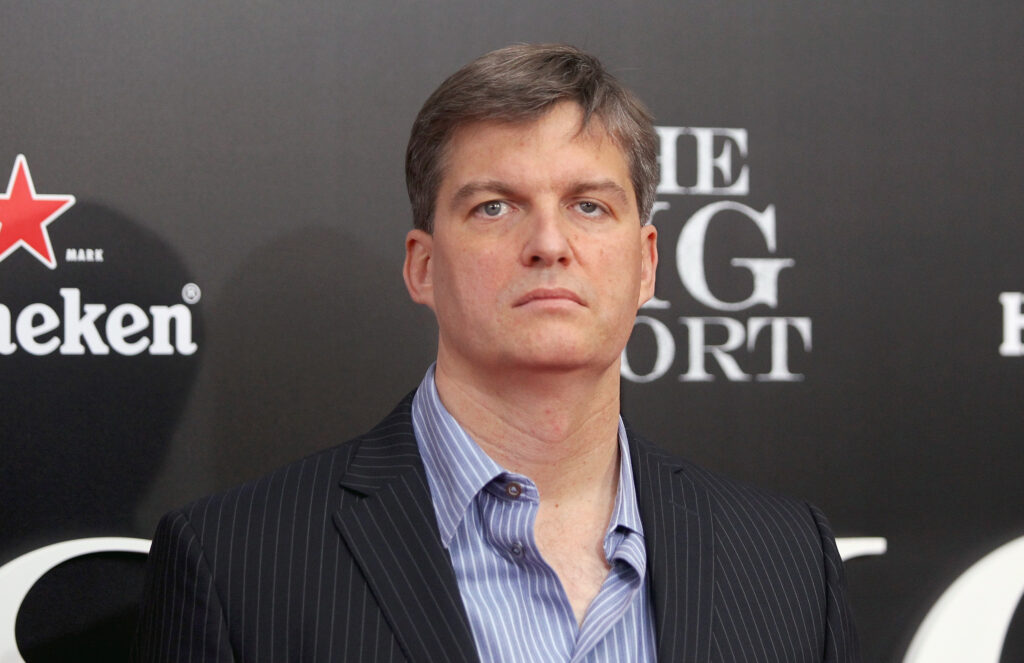Michael Burry, the famed “Big Short” investor who predicted the 2008 housing crash, is once again warning of an emerging market bubble. Nearly two decades later, the hedge fund manager is now sounding alarms about the sky-high valuations of A. I. companies and is voicing them on a modern forum: Substack. Sign Up For Our Daily Newsletter Thank you for signing up! By clicking submit, you agree to our terms of service and acknowledge we may use your information to send you emails, product samples, and promotions on this website and other properties. You can opt out anytime. See all of our newsletters Yesterday (Nov. 23), Burry launched a newsletter on the platform that will focus on his bearish views on the technology, among other topics. “The current market environment is contentious and running hot. Lots to talk about,” he wrote in the description accompanying his new Substack, which has already amassed more than 35, 000 subscribers. Access costs $379 annually or $39 per month. One of his first posts draws parallels between the lead-up to the dot-com crash of the early 2000s and today’s A. I. boom. Burry compared Nvidia-which recently became the first company to reach $5 trillion in market cap-to Cisco, the tech company whose stock soared and then collapsed during the dot-com era. In an X post announcing his Substack, Burry expanded on the idea that the A. I. market may be echoing past bubbles. He cited former Federal Reserve chair Alan Greenspan, who assured investors in 2005 that a housing bubble “does not appear likely.” Burry then pointed out that Jerome Powell, the Fed’s current chair, has described A. I. companies as “profitable” and “different” from previous speculative manias. Michael Burry’s mixed track record Burry rose to prominence after spotting the warning signs of the subprime mortgage crisis-a bet that made him $100 million personally and earned more than $700 million for his clients. His prescient move was immortalized in Michael Lewis’ The Big Short and the subsequent film starring Christian Bale. After the global financial crisis, Warren Buffett told Congress that Burry was acting as a “Cassandra,” referring to the Trojan princess cursed to deliver true prophecies no one believed. His new newsletter pays homage to this feat through its name, “Cassandra Unchained.” In recent years, Burry has made several market calls that didn’t pan out, but his latest warnings about A. I. have sparked fresh attention online. The buzz began in October, when he returned to X after a two-year hiatus to post: “Sometimes, we see bubbles. Sometimes, there is something to do about it. Sometimes, the only winning move is not to play.” Soon after, his hedge fund, Scion Asset Management, disclosed in regulatory filings that it had a short bet worth more than $1 billion against Nvidia and Palantir, another hot A. I. stock. Burry closed his hedge fund a few days later and returned capital to investors. In his Substack description, Burry said Scion’s closure was partially motivated by a desire to share investment ideas more freely. “Running money professionally came with regulatory and compliance restrictions that effectively muzzled my ability to communicate,” he wrote. “These constraints meant I could only share cryptic fragments publicly, if at all.” Burry told readers to expect one to two posts a week, along with occasional Q&As, videos and guest contributions. Rather than placing bets, he’ll be breaking down markets. “I am not retired,” said Burry. “There is still nothing I enjoy more than analyzing companies and markets each and every day.”.
https://observer.com/2025/11/michael-burry-ai-bubble-warnings-substack/
After Shutting His Hedge Fund, Michael Burry Launches a Substack to Speak ‘Freely’ on the A.I. Bubble

NEW YORK, NY - NOVEMBER 23: Michael Burry attends the "The Big Short" New York premiere at Ziegfeld Theater on November 23, 2015 in New York City. (Photo by Jim Spellman/WireImage)
